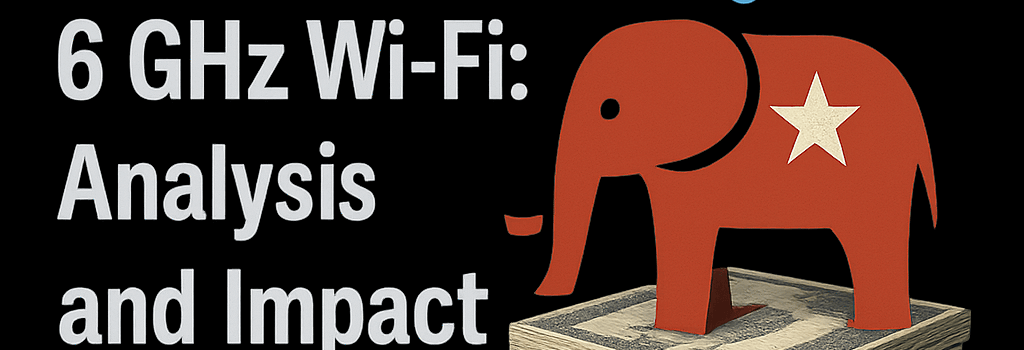GOP Budget Bill Threatens 6 GHz Wi-Fi: Analysis and Impact

By Jon Brodkin
Updated: July 10, 2025
Introduction
In a largely overlooked provision of the Senate GOP’s budget reconciliation bill, led by Sen. Ted Cruz (R-Texas), lies a potential reallocation of the critical 6 GHz spectrum band. If enacted, the amendment would strip hundreds of megahertz of unlicensed frequencies from Wi-Fi networks, funneling them into high-power, commercially licensed auctions for wireless carriers. This move stands to reshape the wireless landscape, impacting consumer broadband, enterprise connectivity, and the burgeoning Internet of Things (IoT) ecosystem.
Background: 6 GHz Spectrum and Wi-Fi Evolution
The 6 GHz band, spanning 5.925–7.125 GHz, was opened for unlicensed Wi-Fi use in April 2020 under FCC Chairman Ajit Pai. This addition, branded as Wi-Fi 6E, expanded available spectrum by a factor of four compared to legacy 2.4 and 5 GHz allocations.
- Channel Bandwidth Options: Supports 320 MHz, 160 MHz, 80 MHz, and 40 MHz channels, enabling multi-gigabit throughput.
- Key Technologies: Orthogonal Frequency-Division Multiple Access (OFDMA), Multi-User MIMO, Target Wake Time (TWT), and the upcoming Multi-Link Operation (MLO) in Wi-Fi 7 (802.11be).
- Automated Frequency Coordination (AFC): A dynamic spectrum access system that prevents interference with incumbent services—fixed microwave, satellite, and public safety operations—by assigning frequencies and power levels in real time.
The Cruz Amendment: Auction Provisions and Impact
The Cruz amendment mandates that at least 800 MHz of mid-band spectrum between 1.3 and 10.5 GHz be auctioned, with a minimum of 300 MHz coming from non-federal allocations. Unlike the House bill, which explicitly protects the entire 6 GHz band, the Senate plan excludes only the 7.4–8.4 GHz range reserved for military and space radar. Consequently, as much as 200–400 MHz of the 6 GHz unlicensed band could be repurposed for licensed 5G use.
Technical Ramifications
Reallocating 200 MHz from the 6 GHz band would:
- Reduce the number of 320 MHz channels from two to zero, impacting Wi-Fi 7’s peak data rates (up to 30 Gbps theoretical).
- Limit 160 MHz channel availability, halving multi-gigabit capacity and diminishing performance in high-density environments (e.g., stadiums, campuses).
- Constrain future Wi-Fi standards (e.g., IEEE 802.11bf for sensing, 802.11dg) requiring wide channels.
Stakeholder Perspectives
Mobile Carriers & CTIA
“The upper 6 GHz band (6.425–7.125 GHz) is the next global 5G band,” said a CTIA spokesperson in June 2025, arguing that U.S. carriers face spectrum shortages even as industry filings suggest otherwise.
AT&T CFO Pascal Desroches publicly stated the company has “no pressing need” for additional spectrum for the next 36 months, while Verizon and T-Mobile executives have similarly downplayed immediate mid-band deficits.
Wi-Fi Alliance & Technology Vendors
Apple, Cisco, Broadcom, HP, Amazon, Meta, and more penned a June 2025 letter warning that any reduction in 6 GHz unlicensed spectrum “would be devastating to Wi-Fi performance in homes, enterprises, and public venues.” The Wi-Fi Alliance reports over 120 million consumer 6E devices shipped in the first half of 2025, with projections of 370 million annually by 2029.
Latest Developments
- FCC NPRM (July 2025): Chairman Brendan Carr launched a Notice of Proposed Rulemaking to explore spectrum sharing frameworks, including expanded Automated Frequency Coordination parameters to safeguard incumbents while opening bands to Low Earth Orbit (LEO) satellite services like Starlink.
- Wi-Fi 7 Certification: The Wi-Fi Alliance initiated its Wi-Fi 7 certification program in Q2 2025, validating interoperability and performance across 60 chipset designs supporting 320 MHz channels and Multi-Link Operation.
- ITU-R WRC-27 Preparations: International telecommunications bodies are evaluating Agenda Item 2.1, assessing whether to designate portions of 6 GHz for International Mobile Telecommunications (IMT) at the 2027 World Radiocommunication Conference.
International Spectrum Landscape
Global regulators diverge on 6 GHz allocation:
- Europe (ETSI): Allocated 5.945–6.425 GHz for standard-power indoor and low-power outdoor use with automated DFS safeguards.
- Brazil (ANATEL): Permits 5.925–7.125 GHz unlicensed indoor only, disallowing outdoor operations to protect satellite uplinks.
- South Korea (KCC): Opened 5925–7125 MHz for both indoor and outdoor unlicensed but caps power at 30 dBm EIRP, compared to 36 dBm in North America.
These variances affect device interoperability and complicate manufacturing economies of scale.
Economic and Innovation Considerations
Independent analyses estimate that unlicensed mid-band contributes over $200 billion annually to the U.S. economy via productivity gains, new business models, and IoT deployment. Auction revenue projections—$10–15 billion—must be weighed against the long-term cost of throttling in-home and enterprise broadband capacity, where Wi-Fi is often the primary access technology.
Conclusion
The Senate GOP budget bill’s spectrum auction provision raises critical questions: Should short-term auction revenues trump the strategic value of unlicensed spectrum as a driver of innovation? With emerging technologies—from telemedicine to augmented reality—relying on robust indoor connectivity, policymakers must carefully evaluate the long-term implications of shrinking the 6 GHz unlicensed frontier.